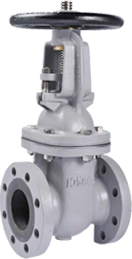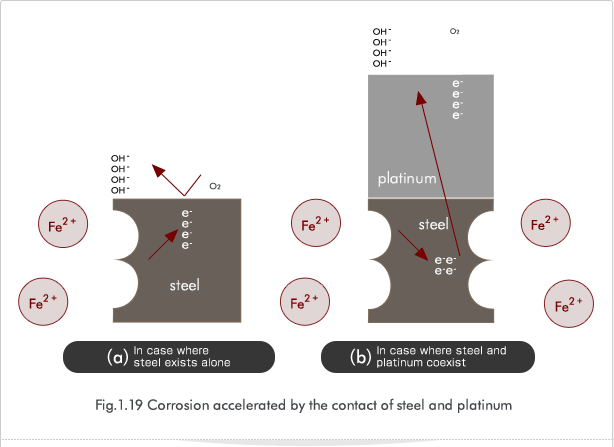
|
We succeeded in providing a lining even for a shaft, which had been deemed impossible in the past, by interlocking a valving element and a valve shaft in our own unique way. As a result, there is no exposed stainless steel part inside the valve any more, thus eliminating the problem of galvanic battery corrosion that occurs between cast iron and stainless steel.   |
 |
|---|
|
The picture on the left shows the valving element of a swing check valve (threaded type with valve seat) that has been corroded by seawater. The valving element is made from cast iron and the valve seat is manufactured from stainless steel. Cast iron is coated with tar epoxy resin. The valve made of stainless steel shows no corrosion at all, whereas the valving element of cast iron is simply corroded. Why? |
 |
|---|

The above diagram depicts the mechanism of corrosion that is accelerated when two metals of dissimilar electric potentials contact each other. “When an oxygen molecule has diffused onto steel, two iron atoms dissolve. As shown on diagram (b), however, when another oxygen molecule has diffused onto platinum, two more iron atoms dissolve. It means that the rate of corrosion development doubles. This phenomenon is referred to as galvanic corrosion.”
However carefully a less noble metal may be protected in an electrical sense, there is no perfect coating or lining method (e.g. tar epoxy paint, nylon coating, epoxy powder painting, rubber lining, etc.). As a moving part, a valve lets electricity carry through from worn surfaces, from gaps between parts or from pinholes all caused by its movement.
In other words, where there is a galvanic corrosion environment, it allows galvanic corrosion to take place. In addition, what is worse is that the area of stainless steel, noble metal, exposed to seawater is far greater than that of carbon steel, less noble metal, from which coating or lining peeled off.
Based on the belief that the problem of corrosion in valves can be resolved if we can eliminate the root cause, we finally succeeded in developing a novel method –an innovation to provide a lining for the entire stainless steel surfaces that are subject to corrosion by seawater.
That is the valve free from galvanic battery corrosion.


